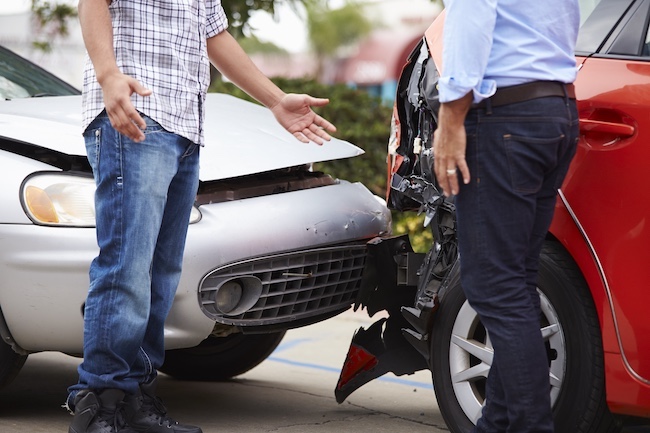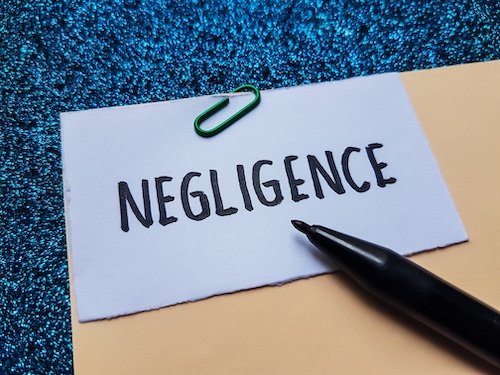Comparative Fault in Car Accidents: What North Carolina Drivers Need to Know
We are NC Car Accident Lawyers. We represent people injured in car accidents across North Carolina. We fight to recover damages for medical bills, lost wages, property damage, and pain and suffering. We know state law, especially contributory negligence under North Carolina law. We use every tool—evidence, expert testimony, strong legal argument—to protect your rights. Our goal is to help you recover what you deserve.
Comparative fault is a common rule in many states, but North Carolina follows a much stricter standard called contributory negligence. This difference can change the outcome of a car accident claim entirely. While in other jurisdictions a plaintiff may still recover damages reduced by their percentage of fault, in North Carolina even one percent of fault attributed to the plaintiff can bar recovery. Understanding this distinction is critical for anyone injured in a car accident.
A North Carolina car accident lawyer can explain how the law applies to your case and protect your right to compensation.
Understanding Comparative Fault
Comparative fault is a legal principle that determines how responsibility is divided when more than one party contributes to an accident. It focuses on assigning a percentage of fault to each person involved, which directly affects the amount of damages a plaintiff can recover.
Comparative Fault Defined
Comparative fault, also called comparative negligence, is the process of apportioning fault among the parties involved in an accident. A jury or court determines each person’s percentage of fault based on the evidence. The plaintiff’s recovery is reduced in direct proportion to the degree of their own negligence.
Pure Comparative Negligence Rule
Under the pure comparative negligence rule, a plaintiff can still recover damages even if they are mostly at fault. For example, if a person is found 90 percent at fault for an accident, they may still recover 10 percent of the damages caused by the defendant. This rule ensures that recovery is based on a strict calculation of fault chargeable to each party.
Modified Comparative Negligence
Modified comparative negligence is used in many jurisdictions. It limits a plaintiff’s recovery if they are found equally or more responsible for the accident. Depending on the state’s law, if a plaintiff is either 50 percent or 51 percent at fault, they are barred from recovery. This approach is intended to prevent claimants from recovering damages when their own negligence is equal to or greater than that of the defendant.
Key Principles of Comparative Fault
Comparative fault is built on several consistent principles. Fault is determined by looking at the proximate cause of the injury or property damage. Each party’s actions are reviewed to see how they contributed to the harm. The plaintiff’s recovery depends on the degree of fault attributed to them, and the damages they can recover are limited to the defendant’s percentage of liability.
North Carolina’s Contributory Negligence Doctrine
North Carolina follows contributory negligence instead of comparative fault, which sets it apart from most other states. Under this doctrine, even minimal fault on the part of the plaintiff can bar recovery entirely.
Pure Contributory Negligence
North Carolina applies the pure contributory negligence rule. If a plaintiff is found to have contributed to the accident in any way, even one percent, they are barred from recovery. This doctrine applies to personal injury, property damage, and wrongful death claims. It creates a strict limit on recovery for claimants whose own negligence proximately caused the accident.
Legal Basis in North Carolina
The rule is grounded in state law, specifically N.C. Gen. Stat. § 1-139, which sets the burden of proof in negligence actions. The defendant must prove that the plaintiff’s own negligence contributed to the harm. If successful, the plaintiff’s recovery is completely barred. This statute gives defendants and insurance companies a strong defense in car accident cases.
Impact on Plaintiffs
The effect of contributory negligence on plaintiffs is significant. A person injured in a car accident may lose the ability to recover damages if the court determines they were even slightly at fault. Examples include speeding, distracted driving, or failure to wear a seatbelt. These small acts can be used as evidence of contributory fault, preventing any compensation.
Exceptions to the Rule
There are limited exceptions that allow a plaintiff to recover despite their own negligence. The last clear chance doctrine applies if the defendant had the final opportunity to avoid the accident but failed to act. Contributory negligence is also not a defense against gross negligence or intentional torts. These exceptions give plaintiffs a narrow path to recovery in cases where strict liability would otherwise apply.
Exceptions and Legal Nuances
Although North Carolina follows strict contributory negligence, several exceptions and special rules may allow a plaintiff to recover damages even when they share some fault.
Last Clear Chance Doctrine
The last clear chance doctrine applies when the defendant had the final opportunity to prevent the accident but failed to do so. If proven, the plaintiff may still recover damages despite their own negligence. Courts look at whether the defendant could have reasonably avoided the harm once the danger was clear.
Gross Negligence and Intentional Torts
Contributory negligence is not a defense against gross negligence or intentional torts. If the defendant acted with reckless disregard or intended to cause harm, the plaintiff’s recovery is not barred. This principle ensures that a defendant cannot escape liability for extreme misconduct by pointing to minor negligence on the part of the plaintiff.
Standard for Minors
North Carolina law recognizes that children are not held to the same standard of care as adults. A minor’s actions are judged based on what would be expected of a child of similar age, experience, and capacity. This protection reduces the likelihood that a child’s limited judgment will bar recovery in a negligence action.
Assumption of Risk
In some cases, defendants argue that the plaintiff voluntarily accepted a known danger, which is called assumption of risk. This can limit or bar recovery, but courts require clear evidence that the plaintiff understood the specific risk and accepted it. Without this proof, assumption of risk cannot be used to deny compensation.
Why Comparative Fault Misunderstandings Hurt NC Claimants
Many people injured in North Carolina car accidents assume that comparative fault applies, but the state’s contributory negligence doctrine creates a very different outcome. Misunderstanding this rule can lead to lost claims and denied recovery.
The Wrong Assumption
Claimants often believe they can recover damages reduced by their percentage of fault, as allowed under comparative negligence rules in other states. In North Carolina, this assumption is incorrect. Even one percent of fault attributed to the plaintiff can bar recovery in personal injury, wrongful death, or property damage claims.
How Insurance Companies Use It
Insurance companies take advantage of the contributory negligence rule by arguing that the plaintiff’s own negligence proximately caused the accident. They may point to minor acts, such as not wearing a seatbelt, driving slightly over the speed limit, or failing to signal. These arguments shift responsibility and reduce the chance of recovery for the claimant.
Small Mistakes With Big Consequences
Actions that may seem minor can have major effects under North Carolina law. A distracted glance at a phone, rolling through a stop sign, or driving a few miles per hour too fast can be used as evidence of contributory fault. These small mistakes can bar recovery entirely, no matter how severe the injuries or damages caused by the defendant.
The Importance of Legal Guidance
A North Carolina car accident lawyer can protect claimants from unfair denials by challenging weak contributory negligence claims. An attorney can gather evidence, present consistent testimony, and show that the defendant’s negligence was the proximate cause of the harm. Without strong legal representation, plaintiffs risk losing their right to recover damages.
Role of a North Carolina Car Accident Lawyer
A North Carolina car accident lawyer at NC Car Accident Lawyers plays several key roles in protecting your rights and helping you recover damages after a crash.
Evaluating Fault and Liability
A lawyer reviews all evidence related to the accident to determine who is at fault. They collect accident reports, medical records, witness statements, photographs, and any traffic camera or dashcam video. They analyze whether the plaintiff’s own negligence might be raised by the defendant. They assess whether the defendant’s actions were the proximate cause of your injury or harm.
Handling Contributory Negligence Arguments
Since North Carolina law bars recovery if the plaintiff is even one percent at fault (contributory negligence), a lawyer works to counter any claim that you contributed to the accident. They look for evidence that shows your actions did not cause or significantly contribute to the harm. They prepare to challenge assumptions of fault that insurance companies or opposing parties may raise.
Calculating and Pursuing Full Damages
A North Carolina car accident attorney assesses both economic and non-economic damages. They quantify medical expenses, lost wages, future medical costs, property damage, and pain and suffering. They consider future harm and long-term effects, not just the immediate costs. They use this assessment when negotiating with insurance companies or presenting claims in court.
Negotiating with Insurance Companies
Insurance companies often try to reduce payouts by pointing out any fault or shifting blame. A skilled attorney handles interactions with insurance adjusters for you. They negotiate to seek a fair settlement that reflects the full extent of your damages. They avoid letting insurers exploit the contributory negligence doctrine to deny or minimize your claim.
Litigating When Necessary
If the insurance company will not offer fair compensation, a lawyer files a lawsuit and represents you in court. They draft pleadings, handle discovery, retain expert witnesses, and present evidence at trial. They argue liability, fault, causation, and damages before judge or jury.
Meeting Legal Deadlines and Procedure
A lawyer ensures you meet all deadlines under North Carolina law, including the statute of limitations for personal injury and wrongful death claims. They comply with procedural rules, properly file documents, and preserve all evidence. Failing to meet these requirements can bar your recovery altogether.
Providing Support and Reducing Stress
NC Car Accident Lawyers take on many burdens so you can focus on recovery. They explain legal options clearly. They guide you through each step of the process. They offer a free consultation and operate on a contingency fee basis so you pay legal fees only if you win.
Contact an Experienced North Carolina Car Accident Attorney Today!
If you’ve been hurt in a car accident in North Carolina, don’t wait. Reach out to our team at NC Car Accident Lawyers today. We will review your case, explain your rights under contributory negligence, and work to protect your recovery. Let us carry the burden of proving fault, gathering evidence, and dealing with insurance so you can focus on healing.
Contact us at 864-561-6247 for a free case consultation today!







